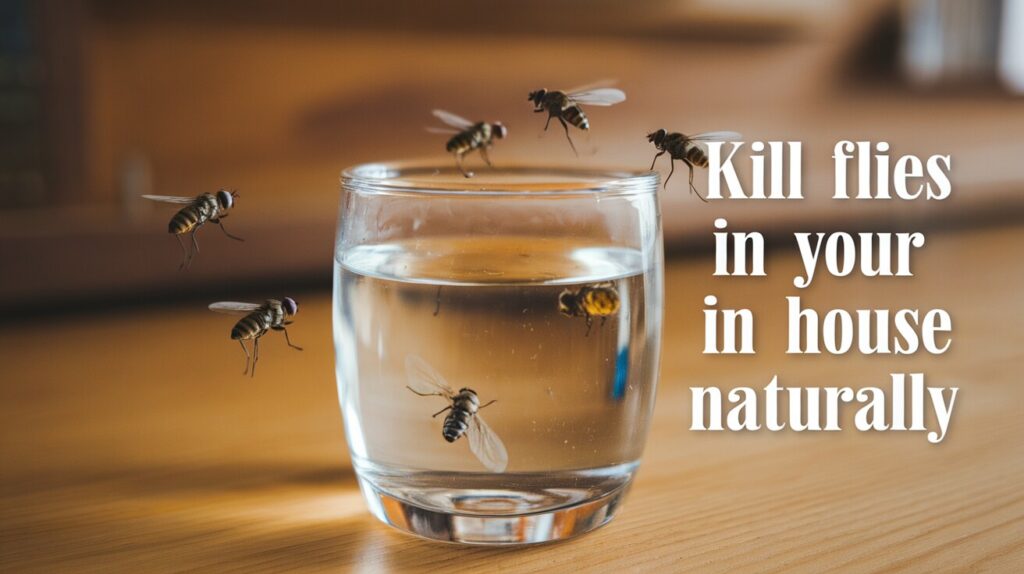Is your home invaded by pesky flies? You’re not alone. That constant buzzing can drive anyone crazy. Flies land on our food. They crawl on our counters. They seem impossible to catch.
These tiny pests are more than just annoying. They carry harmful bacteria and pathogens. They spread foodborne illnesses. Every time they land, they transfer germs. Your family’s health is at risk with each fly that enters your home.
In this blog, I will share 9 completely natural methods on how to kill flies in house. No chemicals needed. No expensive products required. Just simple, effective solutions using items from your kitchen or garden.
These techniques work fast and keep your home safe for children and pets. Let’s explore the natural methods:
Why Flies Enter Your Home?
Pesky flies make your home their playground within seconds. The irritating buzz follows you from room to room. These uninvited guests interrupt meals and ruin relaxation time.
Food remains the primary attraction for these insects. Ripe fruits sitting in bowls, uncovered garbage, and forgotten pet food create perfect feeding spots.
Even microscopic food particles can attract flies from surprising distances. Knowing how to kill flies in the house naturally begins with eliminating these food sources and breaking their attraction cycle.
Damaged window screens and doors left ajar create easy entry points. Flies increase dramatically during warmer months when breeding accelerates. Spring brings initial invasions while fall pushes them indoors seeking protection from cooling temperatures.
Your residence offers everything they need: food access, comfortable temperatures, and safe reproduction spaces.
9 Natural Methods to Kill House Flies
Here are some natural methods to kill flies in your home:
-
Apple Cider Vinegar and Dish Soap Traps
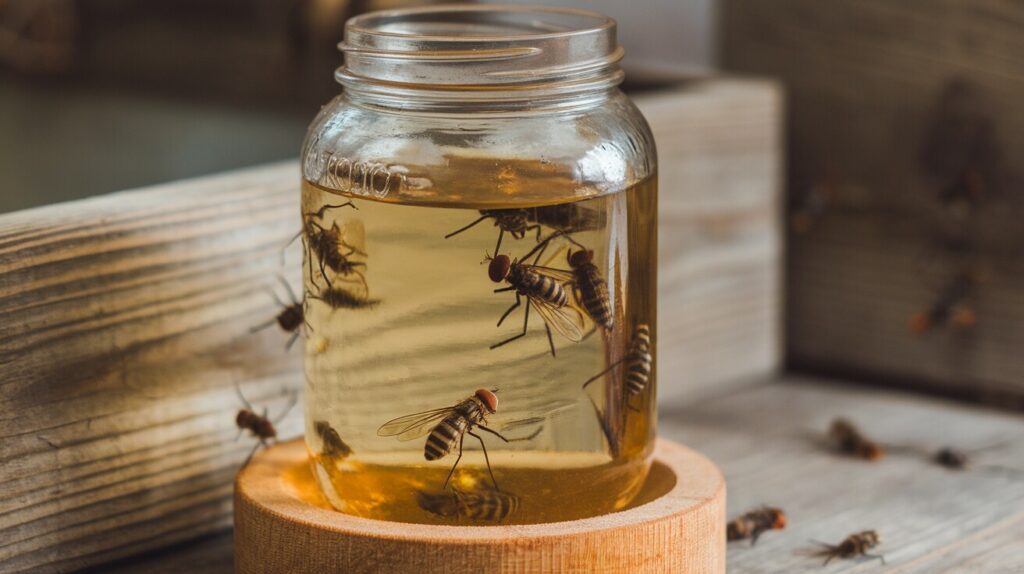
-
Strategic Herb and Plant Placement
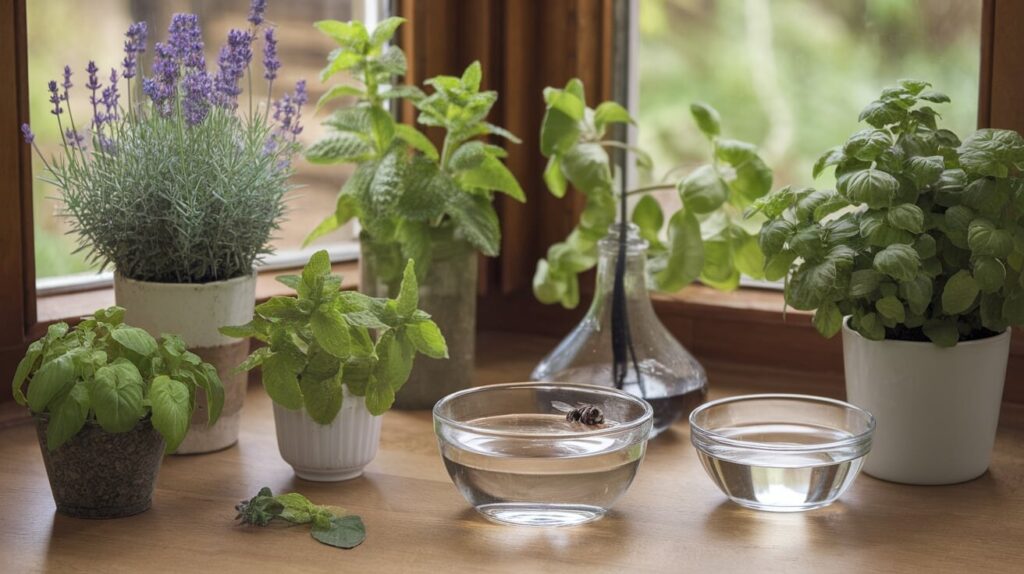
-
DIY Bottle Traps

-
Essential Oil Applications
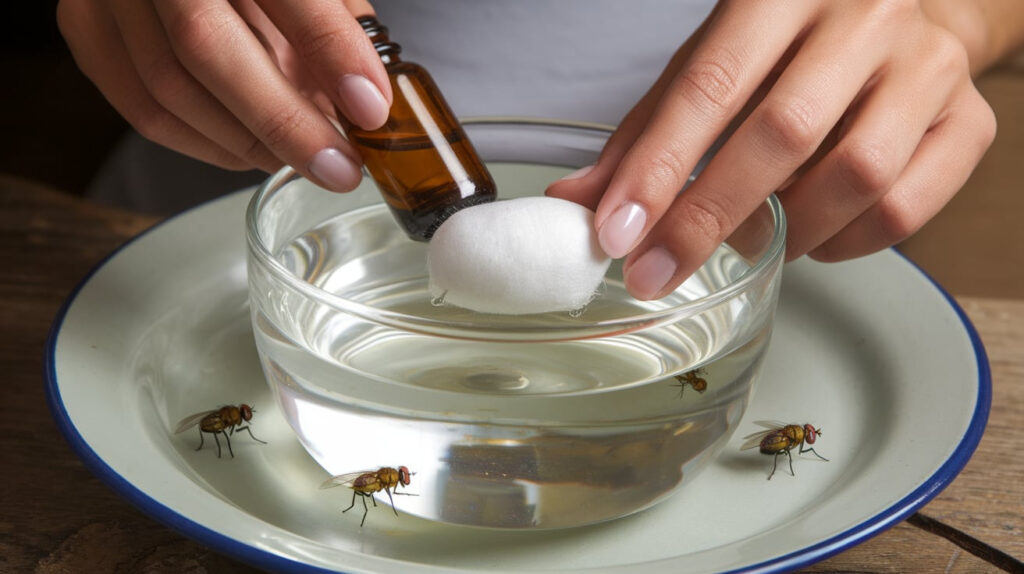
-
Sticky Fly Paper
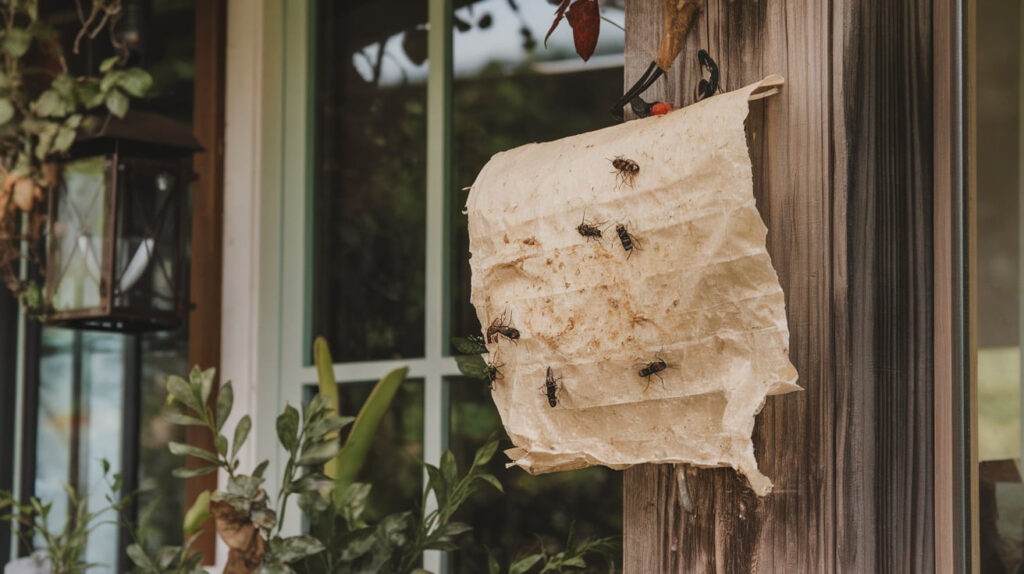
-
Light-Based Fly Traps

-
Venus Flytraps and Carnivorous Plants
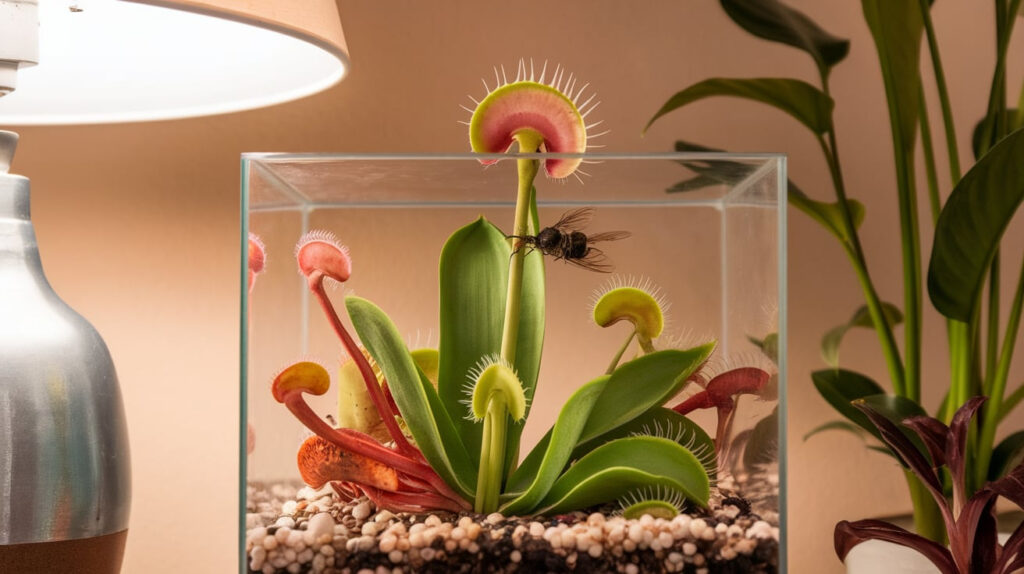
-
Natural Bait Traps

-
Thorough Sanitation Protocol
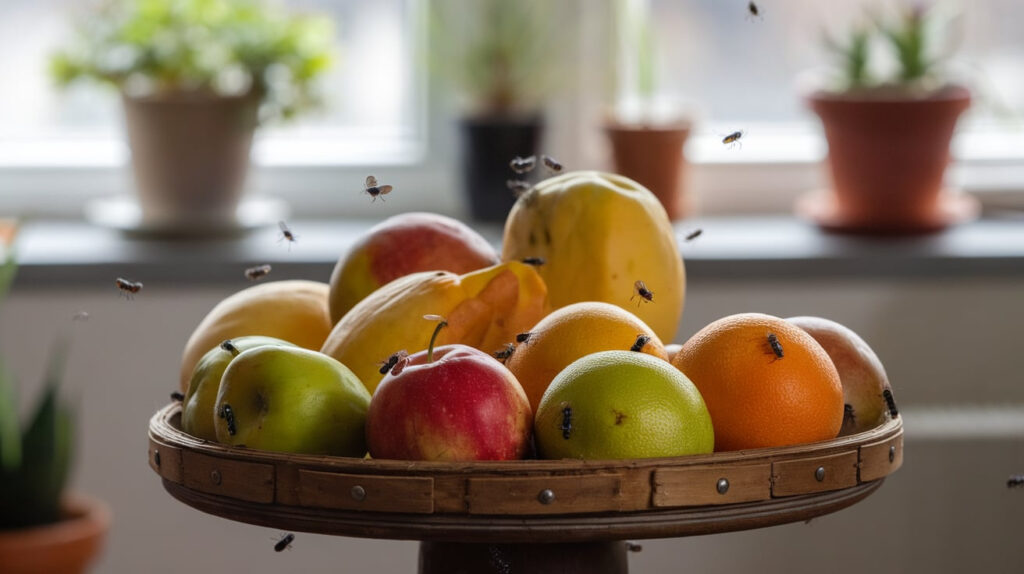
This simple yet effective trap requires only three items from your kitchen. Grab a small bowl, apple cider vinegar, and a few drops of dish soap. The combination creates a powerful tool to kill flies in the house naturally without harsh chemicals or special equipment.
Creating your trap takes just minutes. Just pour about half a cup of apple cider vinegar into the bowl. Add 3-5 drops of dish soap and mix gently. The vinegar attracts flies with its sweet scent while the soap breaks surface tension.
Flies land expecting food but sink immediately into the mixture. Place these traps in fly hotspots throughout your home for maximum impact. Your kitchen counter, near fruit bowls, beside trash cans, and on windowsills work best.
Make multiple traps for larger spaces. Empty and refresh the mixture every two days. The sweet-smelling vinegar pulls flies away from your food and into the trap, clearing your home quickly and efficiently.
Nature provides powerful solutions to kill flies in the house naturally through common herbs and plants. Basil repels flies with its strong aroma. Mint creates an environment that actively avoids. Bay leaves emit scents that disrupt fly navigation.
Lavender emits oils that flies find offensive. Marigolds contain pyrethrum, a natural insect repellent that keeps flies at bay. Place potted basil on kitchen windowsills near food preparation areas. Set small pots of mint on dining tables and countertops.
Hang dried bay leaves in pantries and near trash areas. Position lavender in bedrooms and living areas. The fresh scents improve your home while creating invisible barriers against flying pests.
You can create herb gardens with basil and mint near outdoor eating areas. Hang lavender bundles by the screen doors. This multi-layered approach prevents flies from entering while enhancing your property with beautiful, functional plants.
Transform trash into an effective tool to kill flies in the house naturally with simple plastic bottle traps. You need an empty plastic bottle, scissors, tape, and bait liquid. This method costs almost nothing yet works remarkably well against persistent fly problems.
The clear plastic allows you to monitor your success as flies accumulate inside. Cut the top third of the bottle off cleanly. Flip this top section upside down and place it inside the bottom section, creating a funnel. Secure the edges with tape if needed. Fill the bottom with sweet bait liquid – try fruit juice, sugar water with vinegar, or flat soda.
Sweet aromas draw flies into the bottle through the narrow funnel opening. Once inside, flies become confused by the transparent walls and cannot locate the small exit point. Place these traps in key locations such as kitchens, near garbage areas, or on patios.
Essential oils offer a fragrant solution to kill flies in the house naturally while making your home smell fresh. Lavender disrupts the sensory abilities of flies. Peppermint creates an intense scent barrier that flies avoid.
Eucalyptus contains compounds that repel multiple insect types. Lemongrass emits citronella, a known fly deterrent. These powerful plant extracts work through their strong molecular structures that interfere with fly behavior patterns.
Apply these oils using various methods for maximum coverage. Create a simple spray by mixing 10-15 drops of oil with water in a spray bottle. Use diffusers in central areas to disperse oils throughout larger spaces.
You can place cotton balls soaked in oils near windows and doors. Make an oil-water mixture to wipe down surfaces that flies frequently visit. Each application method serves different purposes based on your specific fly problem areas.
Sticky fly paper remains one of the most reliable ways to kill flies in the house naturally with minimal effort. Commercial options work immediately with pre-made adhesive strips that you simply hang.
Make your version using brown paper bags or cardboard strips coated with honey or corn syrup mixed with sugar. Both versions catch flies that land on the sticky surface and prevent them from escaping. Commercial papers typically catch 80-90% of flies in a room within 24-48 hours.
Strategic placement maximizes your results. Hang strips near windows where flies gather. Place them above fruit bowls and food preparation areas. Install near trash cans and pet feeding stations.
You can replace commercial strips every 2-3 days once filled with flies or when stickiness diminishes. Homemade versions need replacement daily as their adhesive properties fade faster. Keep strips at least 18 inches from walls to prevent accidental contact with surfaces.
Light-based traps offer a hands-free method to kill flies in the house naturally by using their attraction to specific light wavelengths. Flies see ultraviolet light better than humans do and move toward it instinctively.
These traps use special bulbs that emit UV light to lure flies into a capture chamber. The trap works continuously day and night, catching flies while you sleep or when you’re away. Most models capture 90% of flies in a room within the first 24 hours of operation.
You can install your light trap between 3-6 feet above floor level for maximum effectiveness. Place it away from competing light sources and food areas. Your kitchen, garage, and basement make ideal locations. Mount traps at least 10 feet from dining areas.
Clean the collection tray weekly to prevent odors. Replace bulbs every 6-12 months as their UV output diminishes over time. Wipe dust from light surfaces monthly to maintain optimal brightness. These simple maintenance steps keep your trap working at peak performance year-round.
Venus flytraps and other carnivorous plants offer a fascinating way to kill flies in the house naturally while adding unique greenery to your space. These plants evolved specialized trapping mechanisms that detect insect movement. Venus flytraps snap shut when tiny trigger hairs inside their leaves are touched.
Sundews use sticky droplets that ensnare flies like natural glue. Pitcher plants create slippery tunnels that flies fall into and cannot escape. Each plant contains digestive enzymes that break down captured insects. A single mature Venus flytrap can catch 3-5 flies per week.
These living fly traps require specific care to function effectively. Place them in bright, indirect sunlight near windows where flies frequently appear. Water with distilled water or rainwater only, as tap water minerals harm them.
Position plants near fruit bowls, compost bins, or pet food areas to maximize their fly-catching potential. Group several plants together to create an effective fly control zone. Their unusual appearance makes them conversation starters while they quietly reduce your household’s fly population.
You can create effective traps to kill flies in the house using common items like sugar, wine, beer, or fruit mixed with dish soap in shallow containers. The sweet substances attract flies while the soap causes them to sink when they land.
You can use glass jars, plastic cups, or repurposed food containers placed near windows, doors, and fly hotspots for best results.
For maximum impact, position multiple traps in sunny areas where flies gather. Try sugar-honey mixtures for general house flies, wine or beer for fruit flies, and overripe fruit with vinegar for persistent infestations.
Replace your baits every few days to maintain their effectiveness. Flies instinctively find sweet substances, and these traps use that natural behavior to eliminate them from your home efficiently.
Proper sanitation forms the foundation of any effective strategy to kill flies in the house. Start by removing all potential breeding sites like damp mops, dirty drain areas, and uncovered food scraps.
Store food in airtight containers and keep fruit in the refrigerator when possible. Clean spills immediately and ensure garbage bins have tight-fitting lids that prevent flies from accessing waste materials.
Create a regular cleaning schedule that targets fly-prone areas in your home. Wipe down countertops, sweep floors, and clean drains with vinegar or baking soda weekly. Empty and wash garbage containers frequently to eliminate odors that attract flies.
This comprehensive sanitation approach not only helps kill flies in the house but also prevents new generations from establishing themselves in your living spaces.
Conclusion
These nine natural methods offer effective solutions to kill flies in the house without chemicals. The key is consistency; combine sanitation with targeted traps for maximum impact. Clean counters regularly, store food properly, seal entry points, and place strategic traps near windows and doors. With these practical approaches used together, you can maintain a comfortable, fly-free home throughout the year.
FAQs
How quickly can I expect results from these natural methods?
Most natural methods to kill flies in house show results within 1-3 days. Vinegar traps work fastest while sanitation takes longer. Effectiveness depends on infestation size, home cleanliness, and consistent application across multiple techniques.
Can natural methods work as well as chemical solutions?
Natural methods can be equally effective as chemicals for typical household fly problems. They excel in homes with children and pets. Chemical treatments may work faster for severe infestations, but natural approaches offer safer, sustainable control.
How do I handle different fly species in my home?
Identify your fly type first: Fruit flies like produce, drain flies need pipe cleaning, and cluster flies enter through cracks. Adapt your strategy to kill flies in the house based on species’ habits. Fruit flies respond to wine traps, drain flies need drain treatment.
What should I do if flies keep returning despite using these methods?
Check for hidden breeding grounds like forgotten food, damp areas, or damaged screens. Intensify your cleaning routine and combine multiple methods to kill flies in house. Focus on entry points and consider professional inspection for structural issues.
Are these methods safe for households with children and pets?
Most natural methods are safe around families. Essential oils require careful dilution. Sticky traps should be placed out of reach. Vinegar and fruit traps pose minimal risk. Always supervise young children around any trap used to kill flies in the house.

